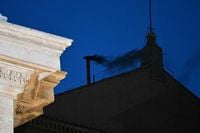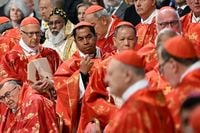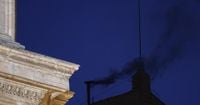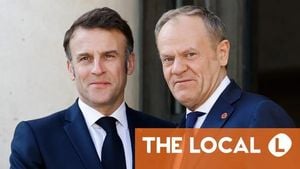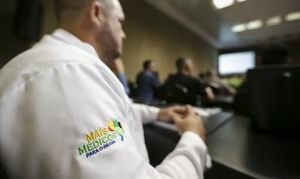On Wednesday, May 7, 2025, at 10:00 AM, cardinals gathered for mass at St. Peter's Basilica in Rome, marking the beginning of the conclave to elect a new pope following the death of Pope Francis. The atmosphere was solemn as the cardinals prepared to undertake the significant responsibility of selecting the 267th pope in the history of the Catholic Church.
As the day progressed, the cardinal electors moved to the Sistine Chapel, where they took an oath of allegiance to the principles of the conclave. This oath is a critical component of the process, ensuring that the electors commit to maintaining the secrecy of the proceedings. Shortly after 4:30 PM, the conclave officially commenced with the cardinal electors entering the chapel in a ceremonial fashion.
By 6:00 PM, the first vote took place, and anticipation filled the air. However, as the evening unfolded, black smoke began to rise from the chimney of the Sistine Chapel around 9:00 PM. This signal indicated that the cardinals had not yet elected a new pope, and the process would continue into the following day. Black smoke traditionally signifies that no candidate has received the necessary two-thirds majority, which in this case requires at least 89 votes from the 133 cardinal electors participating.
Pope Francis, who passed away on Easter Monday, April 21, 2025, at the age of 88, had been facing significant health challenges prior to his death. Reports from the Vatican confirmed that he suffered a stroke followed by heart failure, with his health declining rapidly after he awoke feeling well that morning. His passing marked the end of a papacy that had seen both progressive and traditional elements within the Church.
According to the Italian newspaper Corriere della Sera, Vatican sources revealed that Pope Francis woke up around 6:00 AM on Easter Monday, expressing that he "felt good." However, his condition deteriorated an hour later, and he was pronounced dead at 7:35 AM. Following his death, Pope Francis was laid to rest on April 26, 2025, in a ceremony attended by thousands.
The conclave, which is taking place with a record number of 133 cardinals from 71 countries, including four from Poland, is a significant moment for the Catholic Church. The electors will engage in multiple rounds of voting, each day allowing for up to four votes in two sessions. The first round typically occurs around 10:30 AM, with subsequent rounds following throughout the day.
As the first vote concluded with black smoke signaling no decision, the excitement and hope among the approximately 45,000 people gathered in St. Peter's Square began to fade. Many had waited for over three hours to hear the results, and as the black smoke billowed from the chimney, the crowd quickly dispersed, signaling a pause before the next round of voting.
For the cardinal electors, the first vote serves as an exploratory measure, providing insight into which candidates may have the most support. If a candidate fails to achieve the required majority, the ballots are burned, and black smoke is released, informing the faithful that a new pope has not yet been chosen.
In the event that a new pope is elected, the votes will be burned with a special chemical mixture that produces white smoke, a sign of the successful election. The conclave will continue until a new pope is chosen, and should three days pass without a decision, a one-day break known as a "day of pause" will be observed.
The cardinal electors participating in this conclave include notable figures such as Stanisław Ryłko, Kazimierz Nycz, Konrad Krajewski, and Grzegorz Ryś from Poland. Their collective decision will shape the future direction of the Catholic Church, which faces numerous challenges and opportunities in the modern world.
This conclave is particularly noteworthy not only for its record number of electors but also for the potential directions the new pope could take the Church. Experts predict that the new leader is unlikely to be extremely conservative or progressive, aiming instead for a balanced approach that resonates with a diverse global congregation.
As the world watches, the cardinals will continue their deliberations, guided by their commitment to the Church and the teachings of Christ. The outcome of this conclave will not only determine the next pope but also influence the Catholic Church's role in addressing contemporary issues such as social justice, climate change, and interfaith dialogue.
The solemnity of the occasion is underscored by the prayers and reflections of the electors, who approach their task with the gravity it deserves. Each cardinal took an oath before the open book of the Gospel, affirming their dedication to the process and the Church. "So help me, Lord God and these Holy Gospels, which I touch with my hand," each of the 133 clerics solemnly declared.
As the conclave unfolds, the eyes of the faithful and the world remain fixed on the Sistine Chapel, where the future of the Catholic Church hangs in the balance. The next few days are critical, as the cardinals strive to reach a consensus and fulfill their sacred duty to elect a new pope.
